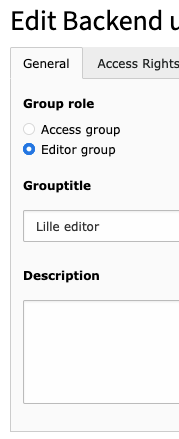by Łukasz Uznański
What is your idea about?
"We aim to improve the Access Control List (ACL) by introducing predefined user groups as a standard feature. During the installation of TYPO3, users will have the option to select these predefined user groups, a feature that will also be available when adding a new site.
Subsequently, we plan to implement a notification system that alerts administrators when the permissions list is expanded, suggesting potential adjustments.
As a third measure our focus will shift to developing a more intuitive and user-friendly interface for the creation and management of user groups, enhancing the current system’s usability."
What do you want to achieve by the end of Q1 2024?
"We aim to include predefined user groups as a default option during the installation process and when creating new sites. Additionally, we would like to implement a notification system designed to alert administrators efficiently.
Goals for Q1
- Predefined user groups for new TYPO3 instance
- Add option to add predefined user groups during installation
- Add command for generating user groups
- Predefined access control settings
- Backend module with notification system for administrators (e.g when new field is added to table that is used in ACL).
- Additional documentation for best practices in creating access groups (also placed in backend module)
- Extension will be published on github in FriendsOfTYPO3 namespace as public repository"
What is the potential impact of your idea for the overall goal?
"By including predefined user groups during TYPO3 installation and site creation, the process becomes more streamlined and efficient. This feature reduces the initial setup time and complexity, making it more accessible, especially for new users or less technically inclined administrators. This feature would guide users towards more consistent standards of configuring user groups.
The introduction of a notification system for permissions significantly improves security and management oversight. Administrators can respond more promptly to changes, ensuring that user access remains appropriate and secure.
Developing a more intuitive and user-friendly interface for managing user groups directly impacts the ease of use. This improvement will make the system more approachable and easier to navigate, reducing potential errors and increasing efficiency in user management.
In summary, the implementation of these ideas will not only streamline and secure the TYPO3 user management process but also enhance the overall user experience."
Which budget do you need for your idea?
7.500 Euro

